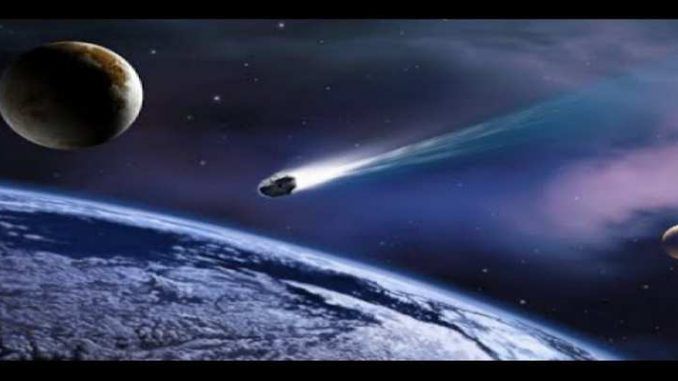
NASA have said that a ‘small’ asteroid currently heading towards Earth is likely to be a “close shave”, and have expressed concern over the mysterious nature of this unusual piece of rock.
Asteroid 2013 TX68 will pass the Earth on March 5, and although scientists are convinced it is ‘unlikely’ to hit us, they say that any potential impact would be catastrophic.
Nationalgeographic.com reports:

BYPASS THE CENSORS
Sign up to get unfiltered news delivered straight to your inbox.
You can unsubscribe any time. By subscribing you agree to our Terms of Use
It could pass at a distance of 9 million miles (14 million km), which is a comfortable 35 times farther than the moon. Or it could come as close as 11,000 miles (17,000 km). That’s about half the altitude that our geosynchronous satellites orbit (but it’s not expected that any satellites will be in danger).
The reason for the wide variance in estimates is, essentially, lack of data. The asteroid was discovered and last seen in 2013 by the Catalina Sky Survey. At the time, scientists were only able to gather data on it for three days before it passed in front of the sun and was lost in glare.
“While astronomers could determine an orbit for the asteroid, there was some uncertainty in the orbital parameters [or its specific flight trajectory],” says Patrick Taylor, an asteroid scientist at Arecibo Observatory in Puerto Rico. Since then, Taylor says, the predictions on its path “have diverged a bit.”
Taylor says it’s unlikely astronomers will be able to narrow down the exact distance of the closest approach before the encounter because 2013 TX68 is currently approaching from the direction of the sun, and will remain hidden in glare until it passes.
“On the day of the flyby, it should brighten dramatically as it moves away from the sun and hopefully one of the large asteroid survey programs that scan the sky every night will pick it up again,” Taylor says. “New observations will reduce the uncertainties on the orbit tremendously and determine just how close the asteroid came to Earth.”
Once they know more, Taylor believes researchers will be able to keep a close telescopic eye on the asteroid for longer periods of time and determine how fast it rotates, how big it is, and what it’s made of. Astronomers are keen on getting these observations, so they can have a better handle on the asteroids and comets that cross Earth’s orbit, known collectively as Near-Earth objects.
The best estimates put TX68’s size at around 100 feet (30 meters wide). That would make it about 50 percent larger than the one that exploded over Chelyabinsk, Russia three years ago, sending window-breaking shockwaves and injuring about 1,000 people. A similar air blast event from a TX68 sized asteroid would contain two times the energy.
“There could be an order of one million near-Earth asteroids around this size class—tens of meters in diameter—and we have only discovered 10,000 of all sizes,” Taylor says.
While scientists have eliminated any chance of a collision this time around, calculations projecting the asteroid’s future orbits show that when it makes its way back near Earth on September 28, 2017, it will have a very remote—one in 250 million—chance of hitting our planet. The odds are even lower in subsequent flybys through 2047. NASA officials believe that with future observations, these risks will likely be reduced even further. That’s exactly what has happened with other asteroids in the past too.


Be the first to comment